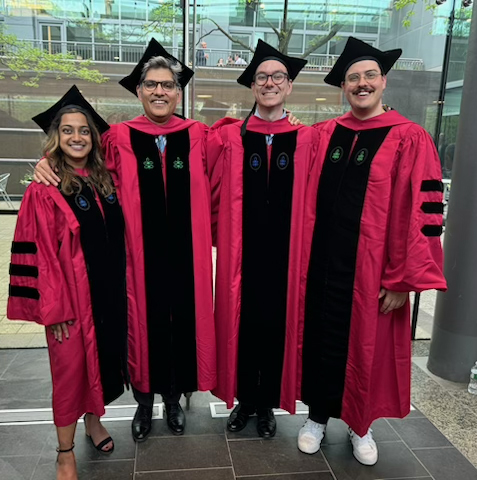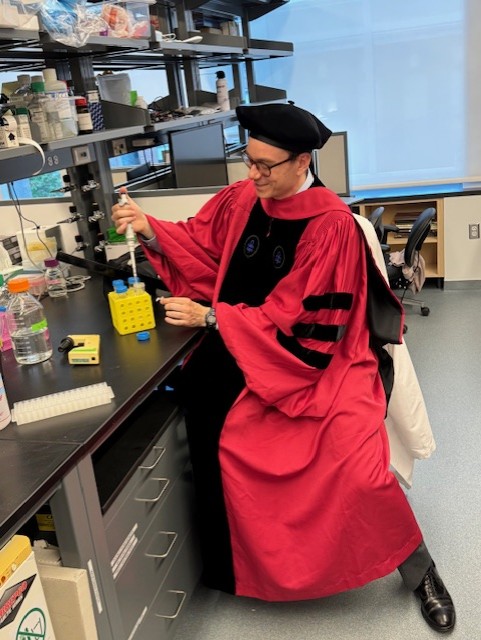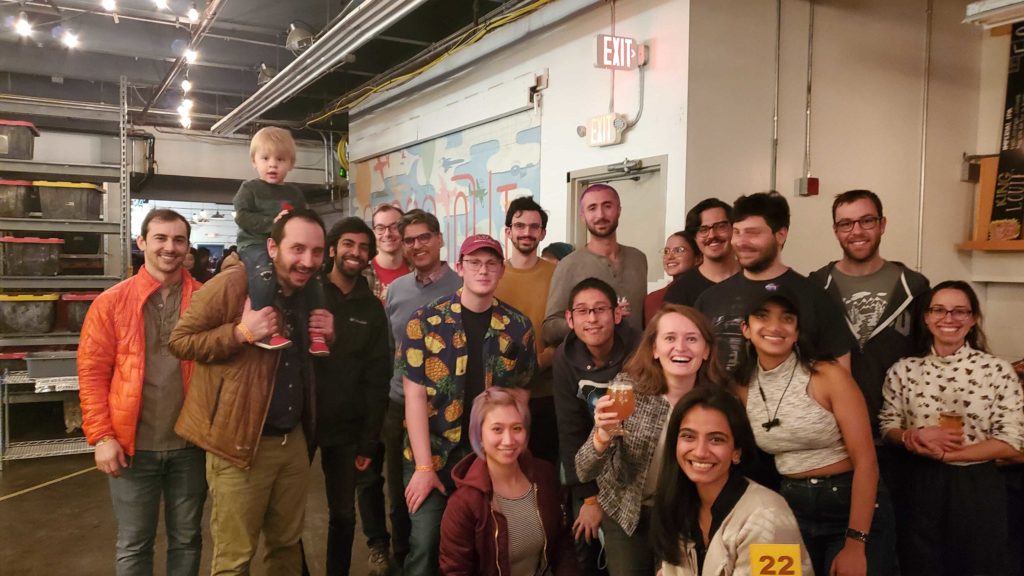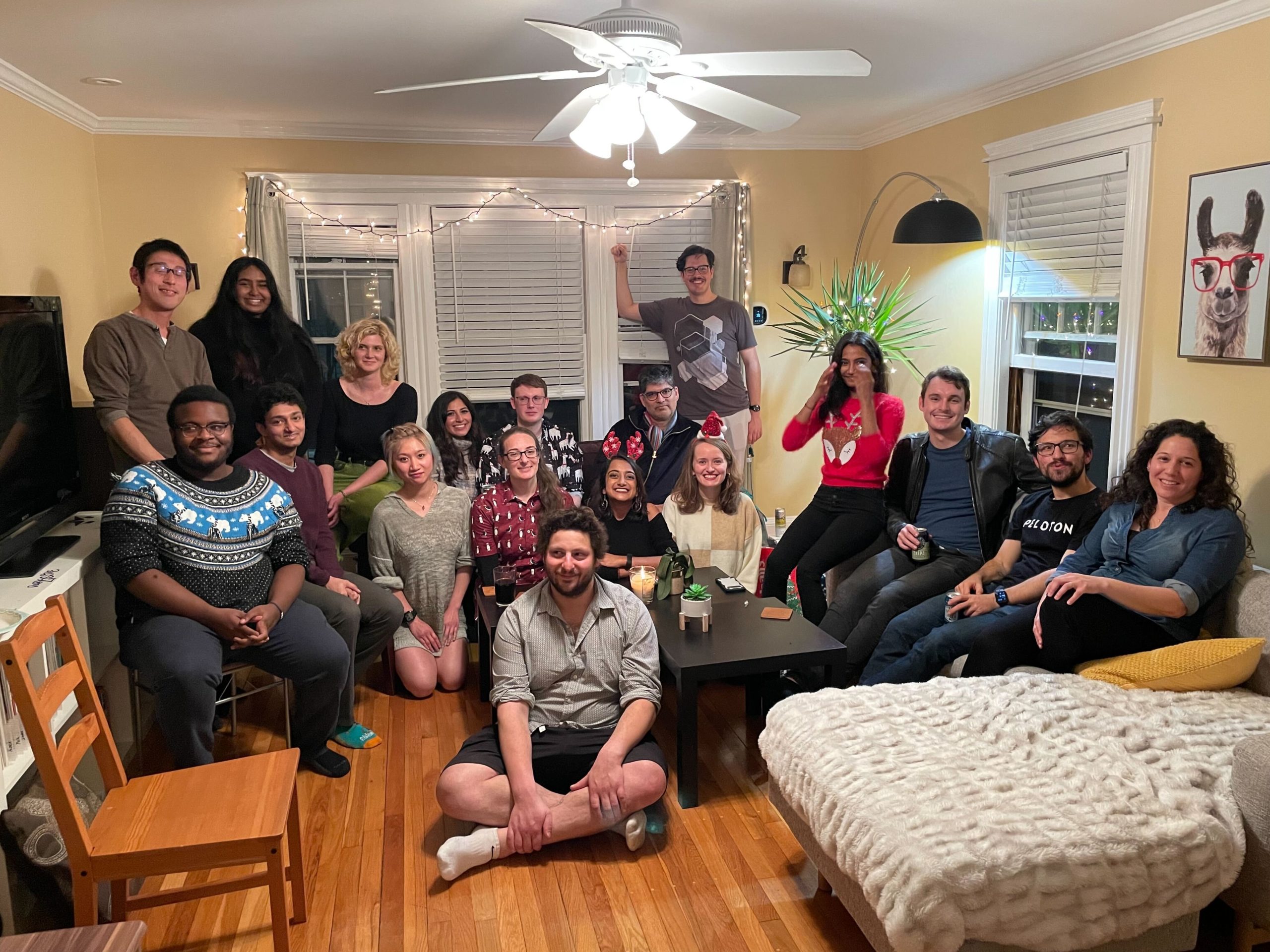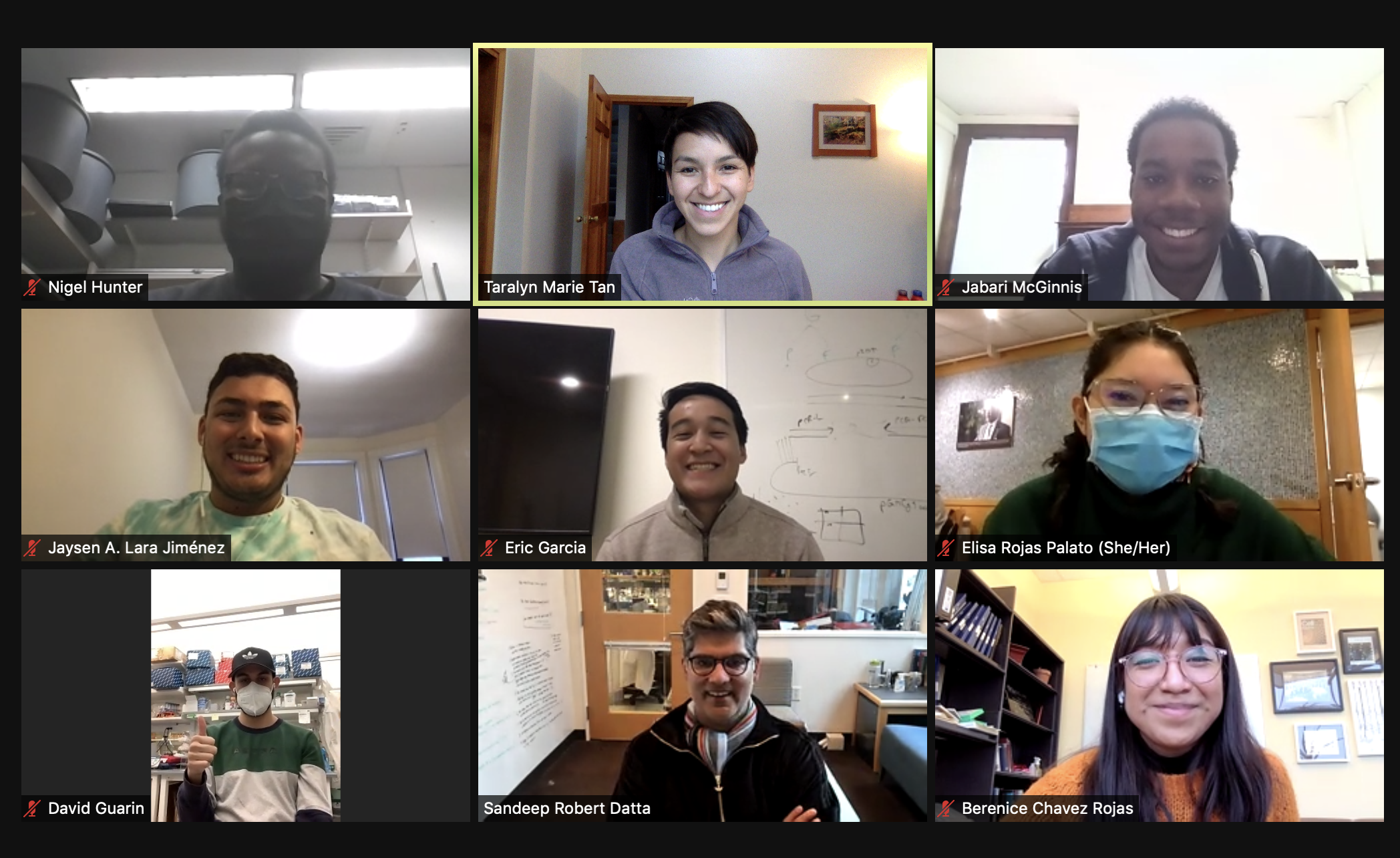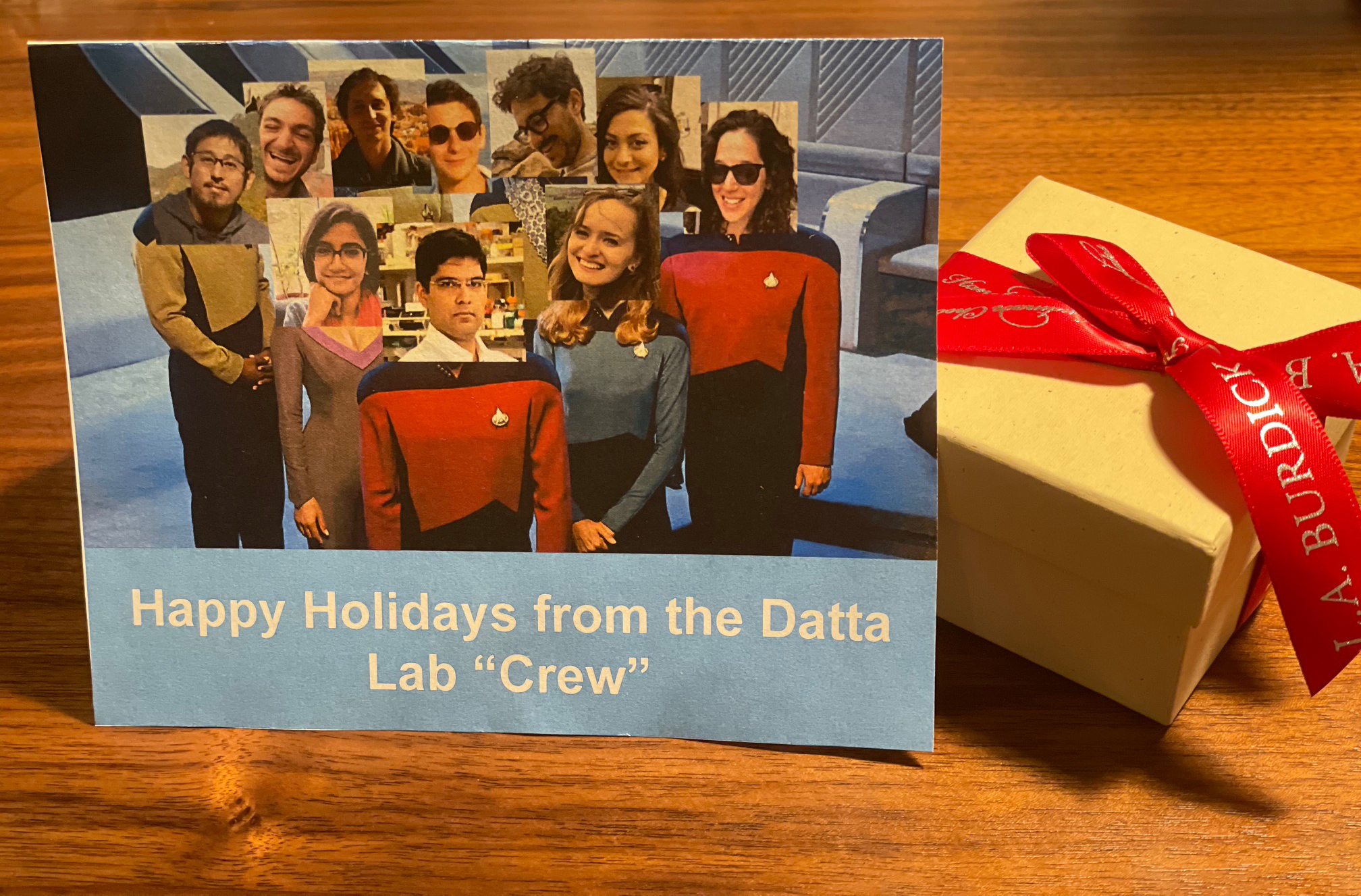It’s always a special day when a student graduates from the lab, but in this case we have three! The amazing Maya Jay, David Brann and Win Gillis all got officially hooded today – we are all so proud of all they accomplished (you can read some of their work here, here, here, and here), with much more exciting work from these three on dopamine, behavior, aging and the molecular organization of olfaction to come in the near future. Win and David are both sticking around for a bit to finish up some exciting science, while Maya has already started an amazing new career starting companies in the life sciences space. They have all given so much to the lab, and it has been such a privilege to work with them – all of us in the Datta lab wish them all the best!
